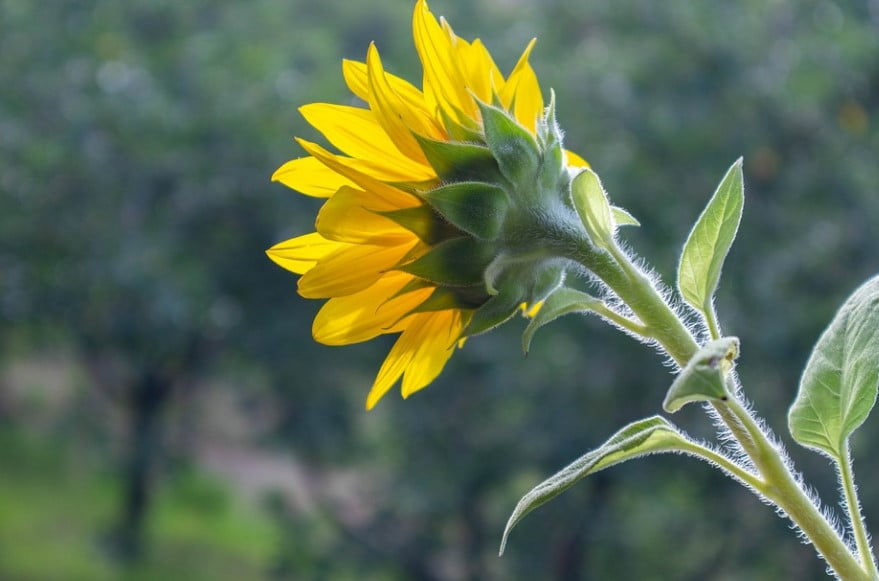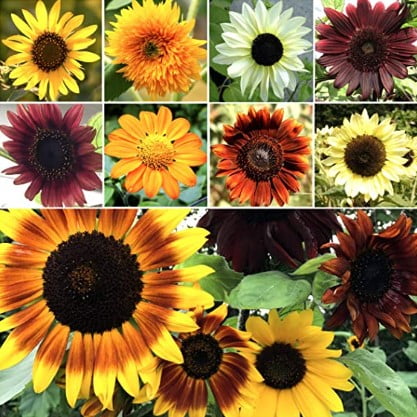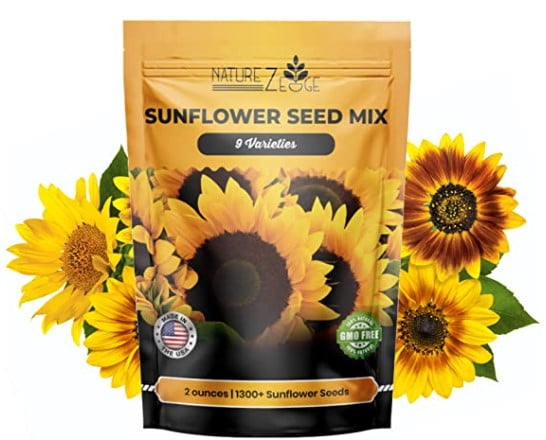You are probably aware that Sunflowers are an important oilseed crop and most of them are processed into vegetable oil, but how about the sunflower stalks? What to do with sunflower stalks? Well if you have the same question, you are in the right place. Today we’ll be telling you about this popular plant and its many uses.
Sunflowers are the quintessential summer flower and they are an equally ideal element in a sustainable, edible garden. Sunflowers are such versatile flowers, from cooking to crafts; not only are they pretty but also they are entirely edible plants. They attract beneficial insects and enrich the living ecosystems.
Sunflowers also add a colorful, edible accent to your landscape. Many opt to use larger varieties to create a windbreak or temporary screen in their garden. Sunflower heads really steal the visual show so wondering about the stalks of any plant for that matter is a question, anyone hardly ever asks! If you belong to the minority who wonders what will become of the sunflower stalks, today is your lucky day. Continue reading and find out what to do with sunflower stalks.
What to do with Sunflower Stalks FAQs
What is the stalk of a sunflower called?
A seedling sunflower’s stem, or stalk, is made up of the Epicotyl, which is just above the first leaves (the cotyledons) of the plant, and the hypocotyl, which is below. The woody mature stems are sturdy, round, and often branch out to hold additional blooms depending on the sunflower variety.
Do you cut down sunflower stalks?
Once your sunflowers have died back completely and the backs of the blooms are brown, it’s time to harvest. You’ll also notice the seeds are plump and somewhat loose. Cut the stalk with sharp scissors or pruners, about one foot down from the flower head, and place it in a container that can catch any loose seeds.
Do sunflowers grow back after cutting?
If I cut my sunflowers back to ground level, will they come back next year? No, it’s an annual plant. It won’t come back. You can leave the seeds hanging in winter for the birds (and harvest some for planting next year), later cut them off, and plant new seeds in spring.
What to do with sunflowers when they are finished?
Hang the flower heads upside down indoors in an area that has good air circulation and is safe from mice and birds. When the seeds are ripe 30 to 45 days later, they’re ready for hanging outdoors as bird feed, but you can also wait until winter to put dried seed heads outside for hungry birds.
Are sunflower stems edible?
Science aside, sunflower stalks make great snacks, too. With a satisfying crunch and a taste comparable to celery, the stalks of young sunflowers can be added to salad, or eaten raw with hummus or peanut butter.
How do you eat sunflower stalks?
Peel young sunflower stalks and cut them into bite-sized snacks or toss them into salads. Sunflower stalks, which taste similar to celery, provide a crunchy texture to salads. Choose immature sunflowers that have pliable, tender stalks that turn their large flowers to face the sun. Avoid older plants with woody stalks.
Do sunflowers track the sun?
Yes! This quality of sunflowers is called heliotropism. They turn to face the sun as it travels across the sky. Many flowers have this tendency to move toward the sun but in sunflowers, it is very pronounced. In the morning when the plant is in the bud, it faces east. During the day motor cells in the stem tilt the bud to follow the course of the sun across the sky so that it receives maximum sunlight. By evening it will be facing west. Overnight it goes back to the east awaiting the rising sun. Researchers have found that even if the buds are removed, the bare stem will still track the sun. Once the flowers have opened completely, they stop moving and face east.
What happens to sunflower stalks after seeds are processed?
The green stalks are chopped like silage and used as cattle feed. The seeds and green foliage are the favorite foods of many birds, mammals, insects, and butterflies.
How do you compost sunflower stalks?
Giant sunflower stalks are especially strong, with tough fibrous cells, and are slow to decompose in a compost pile. At the end of the season, use sharp pruners or lopers to cut stalks from the ground. Dry them completely.
Consider reusing dried sunflower stalks as stakes in your garden or as small support structures for other plants. When you are finished using the stalks, break them into pieces and use them for kindling.
What to do with Sunflower Stalks
#1 Reuse Sunflower Stalks as Natural Poles
- Stalks create structure. The backbone of the sunflower is rigid, coarse, and tough. Naturally, stalks make nice building materials on large and small scales.
- The stalks of the skyscraper sunflowers can range from three to four inches around at the largest point. Some even get as high as fifteen feet. These can make beautiful natural poles for beans etc. As such, if they are in the right spot you may consider not cutting them at all.
Plant your veining plants at the base of them and allow them to simply crawl their way up.
#2 Reuse Sunflower Stalks as Bird Food
Leaving the mature sunflower seed heads attached, saw several stalks off near the base, and dry the entire plant in your shed or garage. Come winter when songbirds are hungry, move the stalks out near your bird feeder and press them into the ground.
#3 Reuse Sunflower Stalks for Privacy and Shade
- String sunflower stalks together with thin but sturdy wire to make a tall bamboo-style privacy screen or windbreak. That same section of sunflower stalk screen can be stacked atop a simple structural frame to shade a patio or to border a garden sitting area.
- You can also create a playhouse. As the stalks begin to shoot up, also plant a vigorous annual vine, such as morning glory, which will weave around the stalks to help fill in the walls. When it’s time to harvest the seed heads, carefully climb a ladder to do so but leave the vertical stalks undisturbed.
#4 Reuse Sunflower Stalks for Crafts
Believe it or not, you can perfectly create a sunflower flute. Wait until the stems are dry, then poke small holes at various intervals for the “flute” holes. Kids will love it and will keep them busy.
#5 Reuse Sunflower Stalks for Compost
cut or break stalks into foot-long sections, dry them and use them as kindling in their wood stoves. Just make sure that you didn’t spray your sunflowers with chemical pesticides because any residual chemicals left on the stalks can be released into your home as fumes if you burn them inside.
Sunflower Seeds for Planting
Sunflower Crazy Mixture 15+ Varieties
Quality Sunflower seeds packaged by Seed Needs. Packets are 4″ wide by 4.675″ tall and come with a full colored illustration on the front side, as well as detailed sowing instructions on the reverse.
Crazy Mixture is a combination of our most popular sunflower varieties. It consists of 10+ Sunflowers, including favorites such as Autumn Beauty, Velvet Queen, Lemon Queen, Red Sun, Evening Colors, and more.
This particular mixture of seeds will produce flowering plants that grow to a varying height of 1 foot tall to over 7 feet tall, in colors of red, yellow & orange, and will even produce bi-colored blooms.
Features:
- GMO-Free
- Quality Seeds
- Mixture 15+ Varieties
NatureZ Edge 1300+ Sunflower Seeds
Includes the following flower seeds: Autumn Beauty, Dwarf Sungold, Grey Stripe, Lemon Queen, Mexican Sunflower, Velvet Queen, mammoth sunflower seeds, and more!
The variety pack is designed to give you sunflowers from 18″ tall all the way up to 7 feet tall. These sunflowers are annual seeds designed to be sown directly outdoors.
These sunflowers will bloom throughout the summer with yellow, orange, and red colors. Seeds are easy to collect and save at the end of the season for next year.
Features:
- Non-GMO
- Summer, Fall




